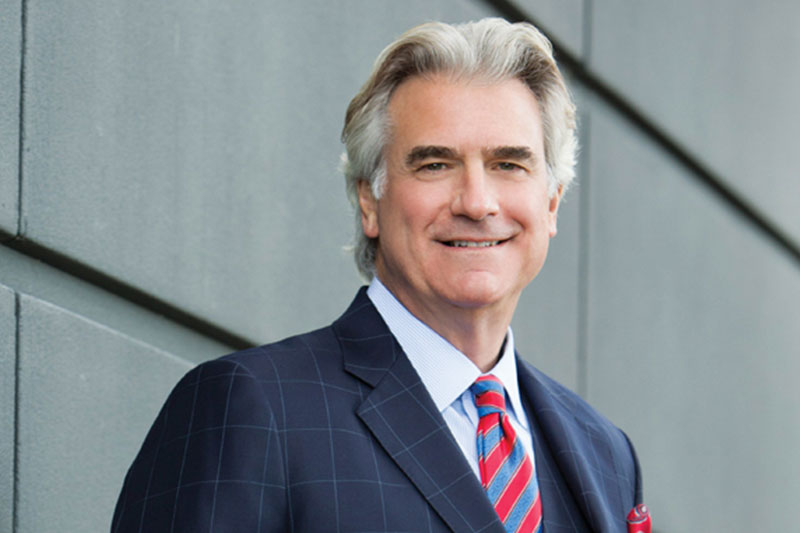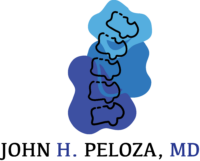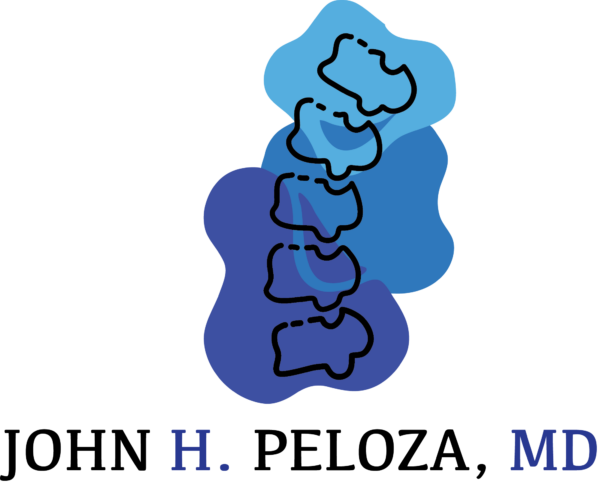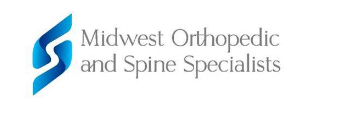UNDERSTANDING IS THE FIRST STEP TO HEALING
When people visit our Chesterfield-based spine care center, it usually is because they are experiencing back pain. We offer regenerative therapy for back pain, along with a host of other modern and traditional techniques for addressing back and spine problems. Practices such as physical therapy, healthy eating, exercise, etc. can help significantly, but sometimes they’re not enough to address your back problems. At some point, spine surgery may be called for. This page answers commonly asked questions about preventative measures, conservative treatments, regenerative treatments, minimally invasive surgical procedures, and more for relieving pain and improving your health. If you have any further questions or would like to schedule an appointment, feel free to contact John H. Peloza, MD in Chesterfield, MO today.

TREATMENTS FOR SPINE PAIN
Depending on the severity of your neck and spine pain and condition, different types of treatments are called for. From mildest to most intensive
PREVENTATIVE SPINE CARE
Q: WHEN SHOULD I SEEK MEDICAL ATTENTION FOR MY NECK OR BACK PAIN?
Most of the time, back pain lasts for only a limited time and goes away without requiring any special treatment. However, if you have weakness or pain that lasts for more than a few weeks, you should consult a spine doctor.
Q: WHAT ARE SOME WAYS TO PREVENT DEGENERATIVE DISC DISEASE?
A: Degenerative disc disease is a chronic condition that typically slowly becomes worse over time. There are a number of things you can do to lower your risk or slow the progression of DDD:
- Stay physically active, in particular doing activities that increase muscle strength and flexibility
- Stop smoking and reduce alcohol intake
- Maintain a healthy body weight
- Take doctor recommended vitamins (e.g. calcium, zinc, and iron can help maintain a healthy bone structure)
Q: DOES SLOUCHING OR SLANTED SITTING CAUSE SCOLIOSIS?
A: Sitting with a slouch won’t cause scoliosis. Scoliosis is caused by genetic factors. However, bad posture can lead to postural scoliosis, which is reversible.
Q: WHAT SHOULD I DO TO REDUCE MY CHANCES OF DEVELOPING SPINE ISSUES?
A: There’s no magic bullet or guarantees. However, six effective preventative measures you can take are:
- Use ergonomic chairs and tools to help support your spine and keep it in good health
- Exercise at least 20 minutes a day
- Avoid lifting with your back — always lift from your legs
- Work on strengthening your core muscles for improved spine protection
- Practice good posture — shoulders back, chin up
- Incorporate stretching into your daily routine
CONSERVATIVE TREATMENTS
Q: WHAT ARE COMMON TYPES OF CONSERVATIVE SPINE TREATMENTS?
A: Medication is probably the most common form of conservative spine treatment. After that, physical therapy, electrical stimulation, and mental health therapy are the next most common treatments.
Q: HOW EFFECTIVE ARE CONSERVATIVE TREATMENTS FOR SPINE PAIN?
A: Conservative treatments are sufficient for addressing most peoples’ spine problems. Surgery is usually the last resort. In most situations, conservative therapy is preferable to spine surgery, as they don’t require extended recovery time or short-term reductions in mobility.
Q: WHAT CAN I DO TO REDUCE BACK PAIN AT HOME?
A: There are lots of conservative measures you can take reduce your back pain at home, such as:
- Avoid long-term bed rest and stay active
- Go for plenty of walks
- Practice good posture
- Build core strength
- Stretch every day
- Use ice and heat for relief, particularly after an injury
- Sleep smart
- Back sleepers — Put pillows under your knees
- Side sleepers — Put pillow between your knees
- Stomach sleepers — Try sleeping on your side or back instead
- Practice relaxation techniques, such as meditation and yoga
REGENERATIVE TREATMENTS
Q: WHAT CAN STEM CELL INJECTIONS DO FOR MY BACK PAIN?
A: Stem cell therapy can potentially repair damaged discs and facet joints, helping alleviate chronic pain.
Q: WHAT TYPES OF BACK PAIN CAN STEM CELL INJECTIONS HELP WITH?
A: Spinal injections can relieve pain for conditions such as:
- Spinal stenosis
- Herniated disc
- Inflamed or damaged nerves
- Degenerative disc disease (DDD)
- Facet joint dysfunction
- Lumbar disc dysfunction
- Spondylosis
- Osteoarthritis
- Overuse injuries
- And more
Q: HOW LONG UNTIL I FEEL RELIEF AFTER STEM CELL TREATMENT?
A: Some people start feeling back pain relief within three weeks, while others can take six to eight weeks. Continued improvement is expected to occur for about six months.
Q: HOW LONG DO THE EFFECTS OF A SPINAL INJECTION FOR BACK PAIN LAST?
A: Some patients report pain relief lasting for years after stem cell therapy.
Q: AM I A CANDIDATE FOR STEM CELL TREATMENT FOR BACK PAIN?
A: Suitable candidates for stem cells for back pain are people who suffer from painful facet or disc injuries, trauma, or a debilitating spinal condition such as rheumatoid arthritis.
Q: WHAT’S THE DIFFERENCE BETWEEN “STEM CELL THERAPY” AND REGENERATIVE THERAPY?
A: While Dr. Peloza does conduct stem cell therapy, what he does here at his practice in Chesterfield, MO involves so much more than that. Cellular tissue grafts contain more than stem cells but also extracellular proteins, growth factors, and cytokines — all of which can help stimulate your body’s regenerative process. Regenerative therapy involves all the methods we use to help create new, healthy tissue to replace worn-down or lost tissue (due to disease, age, congenital defects, etc.). When it comes to spinal disc conditions, regenerative medicine can be a solution in and of itself or it can supplement other treatments. Stem cell therapy is one component of the broader category of regenerative therapy.
Q: WHAT IS A “DEGENERATIVE CASCADE”?
A: A degenerative cascade is where spinal deformities, stenosis, or nerve root compression may occur, building on top of each other to create a whole spine degeneration complex.
Q: IS REGENERATIVE SPINE THERAPY RIGHT FOR ME?
A: Regenerative therapy is a relatively safe, reliable way to start treating back pain or your spine injury. Its benefits include:
- Fast pain reduction
- Minimal recovery time following treatment
- Promotes natural healing
- Anesthesia isn’t needed
- Less inflammation than surgery
- Typically an outpatient procedure
SPINE SURGERY
Q: WHAT ARE THE TYPES OF SPINE SURGERY?
A: The two main types of spine surgery are spinal fusion surgery and non-fusion surgery. To reduce the incidence of adjacent level degeneration, Dr. Peloza uses the latter often, or when appropriate.
Q: WHAT ARE THE BENEFITS OF NON-FUSION SPINE PROCEDURES?
A: Compared to fusion surgeries, non-fusion spine procedures involve:
- Faster recovery time
- Less postoperative pain
- Reduced risk of infection
- Less scarring
- Minimal or no anesthesia necessary
- Shorter time at the hospital
Q: WHAT ARE SOME COMMON TYPES OF NON-FUSION SPINE PROCEDURES?
A: Some common examples of non-fusion spine procedures include:
- Spinal decompression
- Microdiscectomy
- Foraminotomy
- Laminoplasty
Q: WHAT IS MINIMALLY INVASIVE SPINE SURGERY?
A: Minimally invasive spine surgery (MIS) can be contrasted with traditional spine surgery, which generally requires a larger incision and extensive spine exposure and muscle dissection. Minimally invasive surgery, alternatively, offers patients the treatment they need with less postoperative pain, faster recovery, and reduced risk of complications.
Q: WHAT CONDITIONS CAN BE TREATED WITH MINIMALLY INVASIVE SPINE SURGERY?
A: MISS can treat a number of conditions, including:
- Degenerative disc disease
- Stenosis
- Spondylolisthesis
- Trauma or compression of the sciatic nerve
- And more
Q: HOW LONG AFTER SURGERY UNTIL I RECOVER?
A: It depends on the type of procedure that is undertaken. For example, recovery after a discectomy is usually quite fast, while it may take 3 to 4 months for your bones to heal enough for regular activities after a laminectomy.
ABOUT JOHN H. PELOZA, MD
Q: WHAT IS DR. PELOZA’S MISSION?
A: Dr. Peloza’s mission is to provide safe, quality, innovative treatments that enable you to get back to an active life. The foundation of that mission has always been minimally invasive spine treatments, such as conservative therapy, injections, and non-fusion procedures.
Q: ARE YOU ACCEPTING NEW PATIENTS?
A: Yes! Reach out to us today to schedule your first appointment:(314) 530-6350!
Q: HOW EXACTLY CAN YOU HELP ME DEAL WITH BACK OR NECK PAIN?
A: Read about how we can help you here.
Q: WHERE IS DR. JOHN H. PELOZA, MD LOCATED?
A: 14825 N. Outer 40 Road
Suite 310
Chesterfield, MO 63017

MEET DR. PELOZA
Dr. John Peloza, M.D. provides you a superior option to standard or substandard back pain care. A pioneer of authentic, minimally invasive surgical technologies since the 1990s, Dr. Peloza understands what works and what doesn’t work for treating spine and neck pain.
Dr. Peloza and the other highly skilled and caring staff at our practice in Chesterfield, MO are here to provide you accurate diagnoses and treatment for your back pain.
The results of our conservative and regenerative treatments have been proven reliable and consistent. However, if your spinal condition is more severe, Dr. Peloza is here to perform the treatments necessary to reduce your pain, prevent further degeneration, and get you well down the road to recovery.












